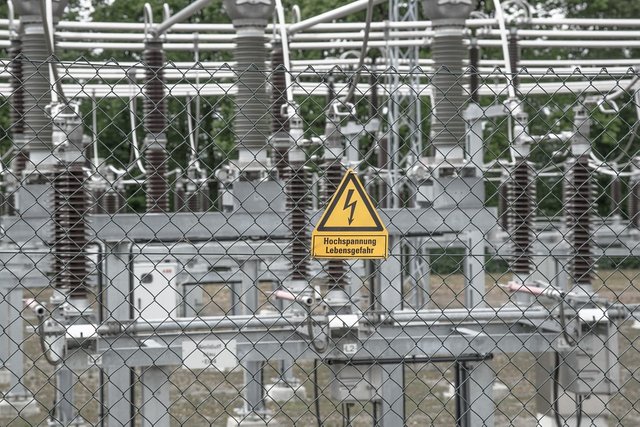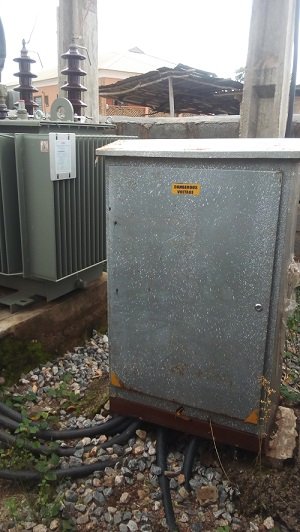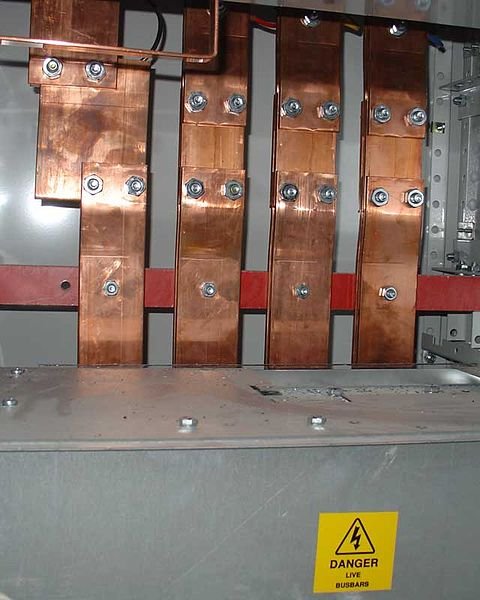SUBSTATIONS: THE HOST OF ELECTRIC POWER
Just last week, an enlightening write-up was written by @olajikehinde on the principles of electricity generation distribution and transmission of power , funny enough that happened to be the main focus of my first official STEM post.
My knowledge of things around that line since then has not been static, Though electricity cannot be seen, it can be controlled and harnessed, if it were uncontrollable, then it would be unusable. Years of research in time past had therefore been invested in not only understanding how to generate electricity, but the best ways to control it for transmission and distribution.
That brings me to remember Bill Gates focus in the primitive days of computer development, while others were working on the hardware development of the computer, Bill gates focused more on the software of the Computers.
Of course electric power for domestic or industrial consumption must pass through the generation, transmission and the distribution phase, at this phases, we would see that there are certain checkpoints electric power must passed where it is either stepped up or stepped down, for efficient transmission and distribution through either large or small distances, this check-points are referred to as electrical substations.
Before you start thinking of a substation as something you have only seen in pictures or on TV before, understand that provided you have a transformer in your neighborhood you have seen a substation, no matter how small it may seem. As we would consider in the future, there are different types of electrical power substations and the one you see in your neighborhood is one of those types.
THE SUBSTATION OVERVIEW

Electrical substation pixabay under CCO license
Seeing the basic function of a substation, it is clear that one of the major components in it is the transformer, true as that may be, the transformer cannot work alone in performing the requirement of a substation, as a matter of fact, there are different types of electrical substations which differ in functions, however, having the same purpose, (aiding the transmission or distribution of electrical energy through either short or long distance).
It is, however, note-worthy that as the situation may demand while transmitting or distributing energy, there be varying functions needed to be carried out and a substation design to suit the requirement of the functions is employed, For instance whilst transmission of power to transmission substations, a step up transformer is needed from the generating plant to the distribution plant, in the same way, while transmitting power from transmission substation to either sub-transmission substations or distribution substations, the step-down transformer is employed.
Types of substations we have ranges from transmission substations, which receives the step up voltage from the generating plant and either step it down (if there are varying required voltage levels) performs a switching action between one area and the other for the purpose of fault detection, fault isolation or fault repair.

THAT’S WHERE SWITCHING SUBSTATIONS COME IN
Remember we stated earlier that the substation doesn’t only step up or step down, well now you are seeing another application of a substation, there exists the possibility that the power to be transmitted between 2 regions is at the same rated voltage level but for division purposes needs to be switched, this kind of substations are known as switching substations. In this type of substations, no transformers are required, it comprises high voltage isolators that can allow or dissalow electric power to flow in one or more transmission line
Switching substations can also be sited close to power station I which case is called the switchyard, many at times it is required to transmit power to multiple regions from one power station, hence it would be wise to construct one of such substation very close to the power station, the switch yard like every other switching circuit operates at only one voltage level, when 3-phase electric current leaves the generator, it passes through phase isolated buses at one end and is connected to a multiple bus-bar at another end,
A bus bar is simply a thick metallic iron bar can be circular or rectangular the bus bar is used to transfer energy into the switch yard.
So then if there is a problem at one bus, it doesn’t affect the other region, inside the bus bar system is an isolator and a circuit breaker. Though they both perform the same job of disconnection, it is good to note that while the isolator is manually controlled and is used off-load, the circuit breaker is automated to disconnect anytime a fault is detected, hence it is automatically controlled, and is used on-load. Of course single bus-bars can be used in a simple arrangement, but multiple bus bars are used when there is diversity of locations to be fed electricity.
HOW ABOUT TRANSFORMERS
Since the ultimate aim of power transmission and distribution companies is to make power available to every consumer far and wide, its close to impossible to talk about substations without talking about transformers as majority of substations you will find around.
The output voltage generated from power plants are quite low (though still high enough to kill anyone that messes with it) however not high enough to travel through required distances, we are talking thousands of miles here, when current travels through large distances there would be lots of losses, these losses consequently reduces the power that would be delivered to other substations thereby resulting in wastage of power, therefore it is desirable to transmit this power in high voltage and low current, doing this would minimize I2R losses and increase efficiency across the power stations.
POWER=VOLTAGE * CURRENT also POWER=CURRENT2*Resistance.
Doing this would certainly require the aid of a Transformer, a Step-up transformer to be precise. A transformer is, therefore, a non-rotating machine that alters the voltage or current values of an incoming electrical power without changing the value of the or frequency of Incoming power from the feeder.
As said earlier, the transformer used in the case of the generating power plants is the step up transformer, and this transformer is used in a step-up substation. So we see power going from a switching substation to a step-up transmission substation.
At this point I think we should understand that step-up transformers not only finds its application collecting power from large power plants, but it can be used in a more local sense, like an large industry, or an institution, even communities not depending on the public power grid only uses it, for example, given a generator that generates about 500Volts of electricity and is required to serve a whole community, what is usually done in this cases is to use a step-up transformer to step the voltage up into a higher level for transmission purposes.

THE SUB-TRANSMISSION SUBSTATIONS (STEP-DOWN TRANSFORMERS)
Wait a minute, we already have stepped-up voltage, and we are transmitting power to different far and vast regions from the step-up substation, of course, we cannot begin to distribute electrical energy to different consumers at that high voltage (We ae talking about 330Kilo-volts here, and our houses needs just about 300Volts). It must be stepped down, to a lower voltage level.
Now at this point, we have about 2 options, either we step it down in a distribution substation, or we step it down at a sub-transmission substation and further transmit to the distribution substation. Many at times (depending on the high voltage level) it is more cost efficient, reliable and organized to first step down to a lower voltage level, at a sub transmission substation.
The range of voltage that the sub-transmission substation operates with especially in Nigeria includes 33KV, 130KV etc. the higher the voltage, the lesser the loss.
Step down transformers are used to achieve this voltage levels, therefore the main equipment in a sub—transmission substation is the step-down transformer.
The image below would best describe the flow of events that happens in each of this substations.
(
Overall flow from substation to substation; Wikimedia commons CCA 3.0:

THE DISTRIBUTION SUBSTATION (WHERE THE MAGIC HAPPENS)
Power coming from either the transmission (step-up) substation or the sub-transmission( step down ) substation is further stepped down into a lower voltage, in Nigeria, you will notice that the making of your device AC input is constantly 240Volts, I can’t imagine making that 33KiloVolts, doing that would be tantamount to a genocide , I don’t want us to dabble into much details on this but the point I want to bring out here is that public power supply is used domestically because of the intervention of the distribution substation.
The distribution substation is constructed with the mind of delivering power supply at the specified rated input voltage (This voltage varies by country). It comprises mainly of a step-down transformer, and a feeder pillar box, the step down transformer brings the voltage down to a smaller level in which can be domestically distributed into houses at the standard rated voltage, in my previous post on generation, transmission and distribution of electrical power, I recall talking about the way this happens.
)
In every distribution station, not only will you find a transformer, you will also find a feeder pillar box, its sole function is to serve as a local means of control and isolation. It kinds of breaks domestic distribution of electricity into smaller units for the purpose of controlling electric flow into different regions.
Let’s make it more practical if a transformer is connected to a load with 3 streets. In the case of a fault in any of the streets, it is possible to isolate the flow of electricity in that street from the feeder pillar unit, inside the feeder pillar unit are conduction bars and high rated fuses. The fuses acts as a protective device for the transformer such that at certain load levels, the fuse cuts and therefore overall limits the load delivered by the transformer to the transformer ratings.
Other equipment’s in electrical substation includes relays, lightning arresters to protect the transformers from power surges, earthing component, adequate security to restrict access by nonauthorized personnel, Armored cable and cable log, gear switches, and depending on the type of substation, a control room where every automated activity is carried out.

CONCLUSION
We all appreciate the usefulness of electrical power and its indispensability in this century, but the process of circulation of power can be a long and expensive shot with lots of factors to be taken into consideration, after all no pay no gain.
However series of research is ongoing to discover cheaper and safer methods of executing this processes, it is therefore strongly believed that even the power sector would undergo more upgrades and probably a revolution.
REFERENCES
For further research and understanding of certain things discussed here, i recommend the following;
Electrical substation and their workings
Electrical substations from circuit-globe
Wikipedia on Electrical substations
If you write STEM (Science, Technology, Engineering, and Mathematics) related posts, consider joining #steemSTEM on steemit chat or discord here. If you are from Nigeria, you may want to include the #stemng tag in your post. You can visit this blog by @stemng for more details.

You can also join us at Promo-Mentors, to improve your blogging skills. Join our discord channel and meet awesome mentors who are willing and ready to shape your writing skills.

)
)

Great effort here. I did read the post by @olajidekehinde he did an excellent job on that article and I can't say anything less here as well.
Kudos!
Thanks so much for stopping by
Hi @lawkay!
Your post was upvoted by utopian.io in cooperation with steemstem - supporting knowledge, innovation and technological advancement on the Steem Blockchain.
Contribute to Open Source with utopian.io
Learn how to contribute on our website and join the new open source economy.
Want to chat? Join the Utopian Community on Discord https://discord.gg/h52nFrV
There is no point generating electricity if you wont distribute it. Transformers have a big part to play just like you mentioned. Nicely written!